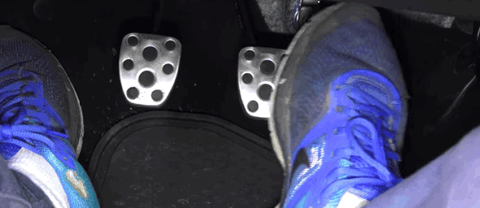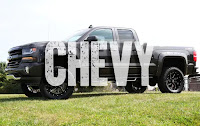Thinking about taking your first off-road riding adventure? Regardless of whether you're heading to your favorite fishing spot that's off the beaten path, or taking the family out for a drive on the beach, being prepared for an off-road adventure is a must. Check out these off-roading tips for a successful trip.
Choose the Right 4WD Vehicle
First of all, the type of off-road adventure you can have depends on your four-wheel (4WD) drive vehicle. Many of today's 4x4s are not designed for specific off-road activities. For dangerous off-road adventures, you'll want a 4x4 with a chassis frame that's built to withstand the punishment of off-road obstacles. In other words, a crossover may not cut it.
Before You Leave Home
 Before getting behind the wheel, the following off-roading tips can help to ensure your trip is safe:
Before getting behind the wheel, the following off-roading tips can help to ensure your trip is safe:Vehicle details:
Know how your 4x4 system works and how to use the controls.
Know where the spare tire and jack are located and how to use them.
Know your vehicle's dimensions including height, width, length, approach angle, departure angle, and ramp angle so that you can pass through tight areas without damage.
Know where the lowest point of clearance is located.
Get used to driving your 4x4. Get a feel for its size and operating characteristics.
Practice using the low-ratio gearbox.
If your vehicle is furnished with manual locking hubs, try them out.
Know where your engine's air intake and engine computer are located so you'll know the maximum depth of water that you can cross.
Maintenance:
Check your tires (including the spare) to ensure they are in excellent condition and inflated correctly. Look under your vehicle for any leaks or mechanical problems. Make sure all of your fluids are topped off. Check the status of your steering and brakes. All repairs should be carried out before leaving home.
Keep track of maintenance on filters, belts, and hoses and keep all fluids topped up.
Safety precautions:
Pack all of the appropriate "emergency" supplies.
Be aware of changing weather conditions before you go.
Travel with at least one passenger, and at least one other vehicle whenever possible. Let someone know where you are going, and set a time to contact them to let them know you are okay. Don't forget to take along their phone number and the local police headquarters' phone number.
Pay attention to how you load your vehicle. Loads should be distributed evenly within the car if possible. Loads behind the rear axle will sag the rear of the vehicle, limiting your departure angle and clearance. If you have a roof rack fitted, be aware of weights and how they are distributed. Excessive loads will change the center-of-gravity, thus making the vehicle less stable. Also, remember the additional height of your car due to the rack.
Rules of the "Road"
Environment:
Don't blaze a new trail. Instead, stay on the traditional way. Your large SUV will damage the ground and embankments by leaving ruts that will deepen and erode with each passing rain.
Don't litter -- not even a cigarette butt or a candy wrapper.
Don't spin your tires and tear up the soil, as it breaks the surface crust and leads to erosion when it rains.
Should you need to pile stones up to get over an obstacle, then be sure to put the rocks back where you found them afterward.
Don't disturb the wildlife; this includes plants and animals. You are treading on their turf.
Safety:
Drive slowly.
Just as on the street, stay right to avoid oncoming traffic. If common sense tells you it's safer to move left instead of right, then do so. If there is only room for one vehicle to pass, the rule is the more maneuverable vehicle, or the more experienced driver should yield the right-of-way.
When two vehicles meet on a grade, and there isn't a safe place to pull over, the vehicle traveling uphill has the right of way. It is safer for the car going downhill to back up, and it will be much easier for the downhill vehicle to get underway.
Keep the driver's side of the vehicle close to obstacles so you can judge distances more accurately. (don't forget about the rest of the car!)
When riding through deep ruts, pay attention to the track. Heavily used paths often become deeply rutted, to the point where it is impossible to drive without getting the undercarriage hung up. To prevent this, drive with one wheel in the rut and the other wheel on the middle hump. If there is enough room on the side, drive with one wheel on the hump, and one on the far side of one of the ruts.

Off-Roading Tips for Emergency Situations
Sooner or later, your vehicle is likely to get stuck or experience mechanical failure. If you pack the necessary tools and supplies, you should be able to get underway again. Here's what to do if you stall, get stuck, or break down.
If you stall: If your vehicle is about to stall on steep incline or decline, do not depress the clutch! This could cause the car to "freewheel," and you could lose control very quickly. Instead, first turn off the ignition and apply the foot brake very hard. Then apply the parking brake. After selecting a suitable route back down the hill, slowly depress the clutch, put it in reverse, let the clutch out, and simultaneously release the parking brake and the foot brake slowly. Then start the engine. With an automatic transmission, never shift the gear lever to "park," as this may lock the transmission and you may not be able to release it without the aid of a winch.
If you get stuck: If you get stuck on a rock, stump or log, survey the situation first to determine the best way to free the vehicle without damaging it. If you're stuck on an object that can be moved, jack up the car and clear away the obstacle. If you're stuck on an object that can't be moved, jack up the vehicle and fill under the tires so that you can drive over the obstacle. Try letting some of the air out of your tires (to about \0 psi) -- remember to air them up again as soon as you can. (Remember that lowering tire pressure also reduces the vehicle's overall height and therefore the vehicle's ground clearance.) Lock the differential locks (if fitted), and use as high a gear as possible. After shoveling away the mud, dirt, sand, or snow that is blocking the tires, clear a path in the direction, you'll be traveling so the tires can get enough traction. Carpet strips, wood, floor mats, brush, rocks, clothing, or sleeping bags can be placed as traction aids under the tires in the direction of travel.
If you still can't get out: Jack up the vehicle and fill the area under the tires with sand, rocks, logs, brush, packed snow or any combination of these. If the jack sinks into the ground, use a piece of wood as a base. (Never crawl under a vehicle that is supported by a jack!)
The best way to get unstuck is by using a winch. A winch takes the hard work out of vehicle recovery. It also allows a lone vehicle a means of freeing itself. Another car can be used as an anchor, but natural anchors, such as trees, stumps, and rocks, are the handiest.












